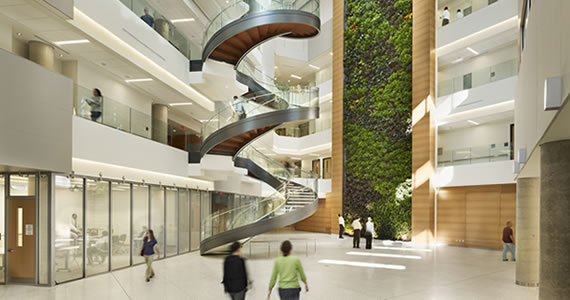
Making my way through the aesthetically pure hallways of Drexel University’s Papadakis Integrated Sciences Building, I ended up losing myself in the beauty of this sort of “green wall” filled with plants. I was on my way to sign-up for a spot as a writer for The Triangle, but before I could get to the stand, I probably spent about five minutes staring at this wonderful sight. The wall had a name, and I had it at the tip of my tongue, but I couldn’t recall it. Eventually, I woke up from my “planty” daydream and headed to the stand that made it possible for me to have written this. I knew I had to learn more about this structure.
They call it the “Biowall,” of course. I carried out my research on this wall and found out multiple benefits its presence brings, most of them being health-related benefits. Despite this wall providing very fresh air in the Papadakis building, recently, it may have been lacking a bit in its visual appeal.
I looked online at an older picture of this wall and compared it to what I saw when I recently walked into the building. There was a noticeable difference. The wall isn’t as “full” as it used to be; there are more spaces between plants compared to how the Biowall used to look before. This shouldn’t be the case.
Indeed, Drexel has services that take care of this wall. It could be that I happened to encounter the wall by the time it was due for some “renovations.” However, I believe the Biowall is well pruned and treated, but I also believe that apart from “keeping it from dying,” we should make an extra effort to enhance how it already looks. A good start would be to add to the Biowall so it looks like its past self, when it looked like a well-occupied garden.
By maximizing both quality and quantity of the plants on the Biowall, there will be more photosynthesis in general taking place. This means that more carbon dioxide in the building would be converted to oxygen (which we want). To keep this, it should be ensured that the plants wouldn’t have to “compete” for food or light, so these should be sufficiently provided to the plants.
The Biowall is an incredible topic to talk about when Drexel comes to mind, and everyone appreciates its presence, especially when looking at it in person. It is an identity for the Papadakis Integrated Sciences Building and, honestly, of Drexel itself. It’s a symbol of innovation, application and a green vision for the future. Its structure itself has more value than the sum of its consisting parts.


